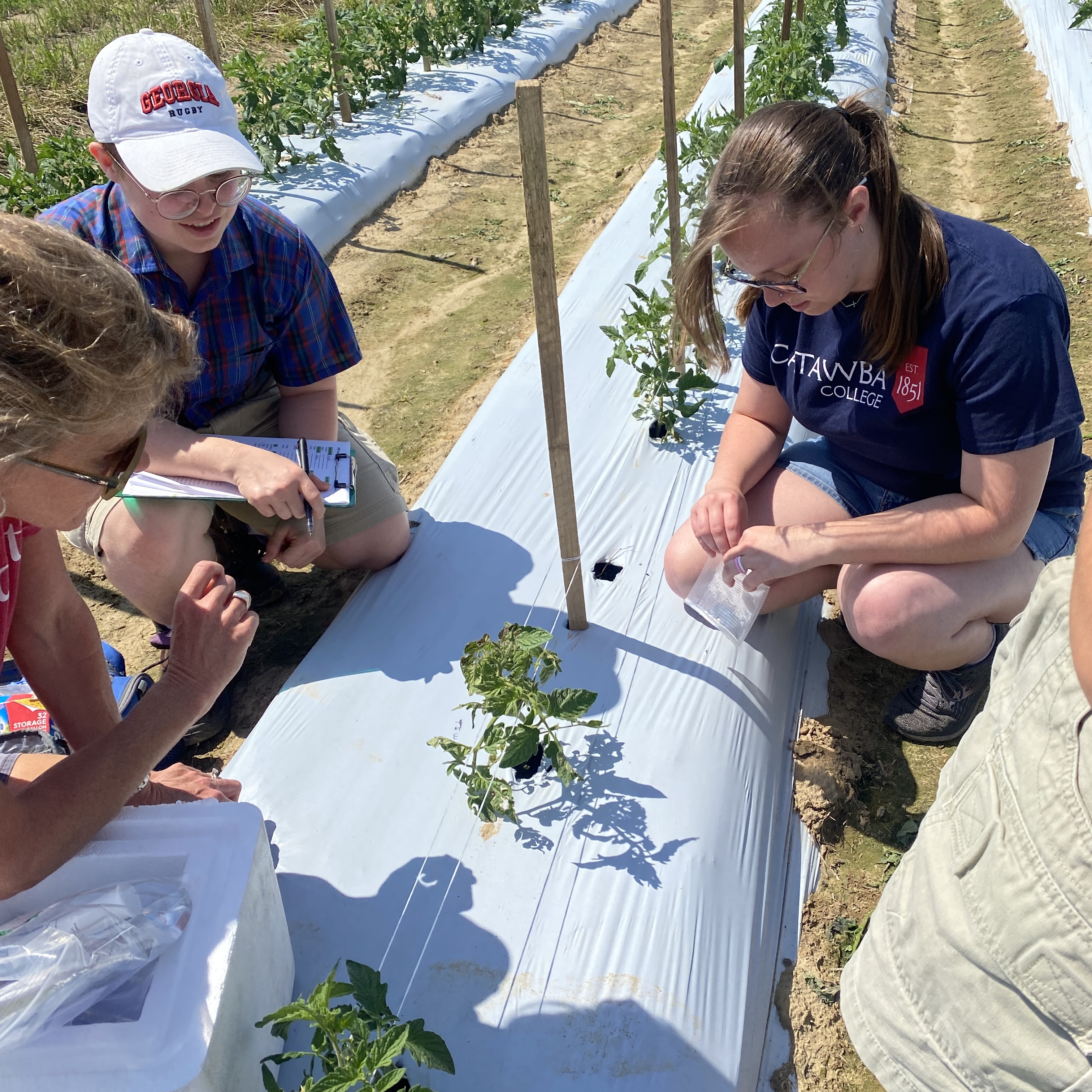Look for Signs of Tomato Spotted Wilt Virus This Year
go.ncsu.edu/readext?941475
en Español / em Português
El inglés es el idioma de control de esta página. En la medida en que haya algún conflicto entre la traducción al inglés y la traducción, el inglés prevalece.
Al hacer clic en el enlace de traducción se activa un servicio de traducción gratuito para convertir la página al español. Al igual que con cualquier traducción por Internet, la conversión no es sensible al contexto y puede que no traduzca el texto en su significado original. NC State Extension no garantiza la exactitud del texto traducido. Por favor, tenga en cuenta que algunas aplicaciones y/o servicios pueden no funcionar como se espera cuando se traducen.
Português
Inglês é o idioma de controle desta página. Na medida que haja algum conflito entre o texto original em Inglês e a tradução, o Inglês prevalece.
Ao clicar no link de tradução, um serviço gratuito de tradução será ativado para converter a página para o Português. Como em qualquer tradução pela internet, a conversão não é sensivel ao contexto e pode não ocorrer a tradução para o significado orginal. O serviço de Extensão da Carolina do Norte (NC State Extension) não garante a exatidão do texto traduzido. Por favor, observe que algumas funções ou serviços podem não funcionar como esperado após a tradução.
English
English is the controlling language of this page. To the extent there is any conflict between the English text and the translation, English controls.
Clicking on the translation link activates a free translation service to convert the page to Spanish. As with any Internet translation, the conversion is not context-sensitive and may not translate the text to its original meaning. NC State Extension does not guarantee the accuracy of the translated text. Please note that some applications and/or services may not function as expected when translated.
Collapse ▲This Sunday is Father’s Day, and next week, we welcome the first official day of summer. Which means it is Tomato time. As usual, I overestimated my family’s need for tomatoes and planted ten plants in our raised beds. I always get so excited when I see plants at the farmers’ market. Now I have a jungle of plants and the beginning of a massive tomato harvest. I can’t rotate my crops because our backyard has two small 4-foot by 8-foot raised bed gardens. However, we do try to replace our soil every two years. Last year my tomatoes were knocked out by Tomato Spotted Wilt Virus or TSWV. Tomato spotted wilt virus (TSWV) is spread by tiny insects called thrips, which acquire the virus by feeding on one of many infected weeds or ornamental hosts and then spreading it to the developing tomato plants. Several weeks after transplanting the tomato plants into the garden, random plants may appear stunted, and younger leaves may be marked with bronze or dark spots or have prominent purple veins. Often the upper foliage will become twisted and cupped as the bronze areas expand. Fruits may have yellow spots. Younger plants may wilt and die, but older plants may survive and bear discolored fruit that may not fully ripen.
Prevention & Treatment: Eliminating weeds in the garden is the first step in reducing the chance of acquiring TSWV. Keeping the grass and weeds mowed in areas surrounding the garden may reduce the spread of thrips onto susceptible plants. Weeds in the garden area during the winter may harbor both the thrips and the virus. For best prevention, remove the old crop debris, till, and then mulch the garden for the winter to keep weeds and thrips down for the following year. Reflective (aluminum or silver-colored) mulch beneath the tomato plants may reduce the number of thrips that arrive and feed upon the plants. If reflective mulch is unavailable, paint black plastic mulch silver before transplanting the tomatoes.
There is no cure for a plant with TSWV. Roguing or removing infected plants immediately from the garden may help reduce the disease incidence on additional plants. However, feeding by thrips can transmit the virus to plants within minutes. Because of this rapid infection time, insecticidal sprays may be useless for the home gardener.
Seeds of several TSWV-resistant cultivars of tomatoes are available from mail-order seed companies. These cultivars are resistant but not immune. They may acquire the virus, but yields and fruit quality may remain acceptable. Look for cultivars with resistance if this has been a problem in the past.

NC State Ph.D. candidate Holly McInnis, Summer intern Cassidy Olmedo, and Dr. Inga Meadows investigate a tomato plant for Tomato Spotted Wilt Virus.
This summer, our Cooperative Extension team is helping NC State research tomatoes at several farms to learn more about TSWV. The NC State breeding program has released several varieties of TSWV-resistant tomatoes. However, some of those varieties have started to break resistance.
So research is being done to determine why and how to manage it. Different types of plastic are one type of control measure. Another is looking at the weed populations around the tomato fields and if they are overwintering thrips populations. Researchers are on the farms weekly, taking data and learning more about this disease.




